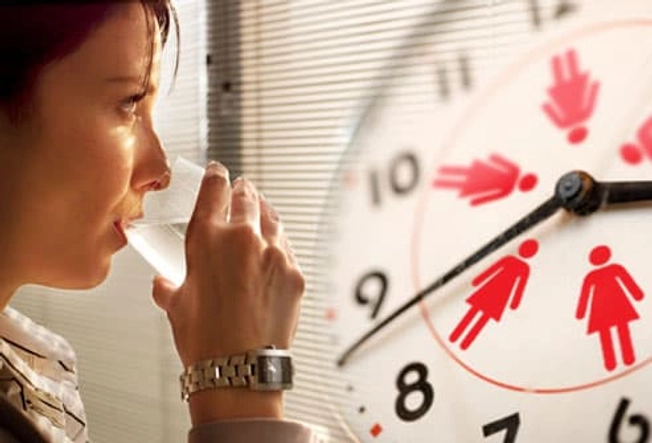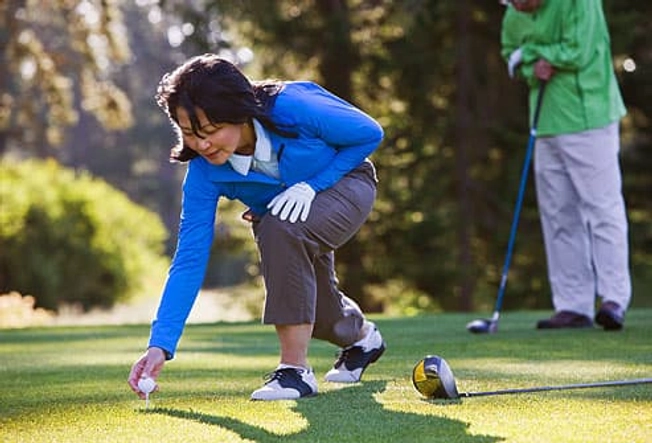Help for Incontinence


Take Charge
Don't let fear of bladder accidents keep you from an active life filled with work, friends, and family. Incontinence isn't a normal part of aging, or something you just have to live with. There are plenty of things you can do. The sooner you call your doctor, the faster you can get treated.

First Steps
It's not easy to talk about incontinence. That's why women wait, on average, 6 years before they get help. Take the first step and call your doctor. They might refer you to a specialist who treats urinary conditions. At your first visit, ask if your diet, health problems, or medicine could be causing the problem.

What Type of Incontinence Is It?
Before your doctor can treat it, they need to know what kind it is. If you release urine when you cough, laugh, or sneeze, that's likely stress incontinence. If you have a sudden need to go before leakage happens, that's probably urge incontinence. Some people have a combination of the two.

Your Doctor Visit: What to Expect
They'll examine you and ask about your health, symptoms, medicines you take, and the type of accidents you have. They might suggest you keep a diary to record every time you go to the bathroom or have wetness.

Tests to Diagnose Incontinence
Your doctor will evaluate your symptoms and rule out any other medical conditions. They may order tests to check for infections or other problems, as well as a bladder stress test.

Kegel Exercises
Squeezing muscles you already use several times a day can help prevent leaks. Kegel exercises work the ones in your pelvis that you use to start and stop the flow of pee.
To do a Kegel, squeeze and hold for about 10 seconds. Then release. Do about 10 sets three to five times a day. It may take up to 3 months before you notice a change.

Retrain Your Bladder
Want more control? Schedule your bathroom visits at regular intervals -- for instance, every 2 hours. If you have to go before the time is up, use Kegels or relaxation techniques to hold it in until the urge passes. After a while, you'll train yourself to go less often, with longer and longer periods between restroom breaks.

Medicine
Drugs can treat urges related to overactive bladder. Some control its contractions, others keep it relaxed. Side effects may include dry mouth, fatigue, and blurred vision. Discuss your medication options with your doctor.

Other Treatments
Women can insert a pessary device into the vagina that helps control leakage.
Another option: Doctors can inject collagen and other bulking substances to thicken tissues around the bladder neck and narrow the opening.
You could also consider getting sling or suspension surgery, which lifts the urethra and bladder neck back into place. For urge incontinence, painless nerve stimulation can stop your body from telling you your bladder is full.

Pick Your Protection
You can buy products designed for bladder protection in stores and online. You'll find disposable and reusable versions. Some are specially fitted for men or women.
For light to moderate wetness, a liner or pad that attaches to your underwear may be all you need. Fitted briefs or protective underwear can handle more liquid.

Get Back Out Into the World
A few routine changes can help prevent leaks and get you back to your favorite activities. Don't stop drinking fluids -- you'll get dehydrated. Limit each drink to 6 to 8 ounces, and don't have them within 2 to 4 hours of bedtime.
Avoid caffeine, alcohol, and artificial sweeteners, which increase the urge to go. If you're overweight, drop a few pounds to ease pressure on your bladder. And don't smoke. It's bad for your bladder, too.

Treatment for Men
Men can become incontinent after an illness or injury, or when an enlarged prostate gland blocks the regular flow of urine from the bladder. Like women, men can often get relief with bladder retraining, lifestyle changes, and Kegels.
Medications can help relax or shrink the prostate if that's the problem. Your doctor may also suggest surgery, like artificial sphincters or male slings, which support the urethra and keep it closed when necessary. Another type of surgery known as TURP can help by scraping away excess prostate tissue that is blocking the flow of urine.
IMAGES PROVIDED BY:
(1) Image Source
(2) LWA / Photographer's Choice
(3) Brand New Images / Stone
(4) Paul Simcock / Brand X Pictures
(5) Thinkstock
(6) Helena Inkeri / Gorilla Creative Images
(7) AAGAMIA / Iconica
(8) B2M Productions
(9) WebMD
(10) Superstudio / Taxi
(11) Alistair Berg / Digital Vision
(12) Jetta Productions / Iconica
SOURCES:
American Academy of Family Physicians: "Kegel Exercises for your pelvic muscles," "Vaginal Pessary," "Urinary Incontinence."
American College of Obstetricians and Gynecologists: "Surgery for Stress Urinary Incontinence."
Cleveland Clinic: "Overactive Bladder."
Harvard Medical School: "Taming Incontinence."
MAyo Clinic: "Transurethhral Resection of the Prostate."
National Association for Continence: "Absorbent Products," "Biofeedback," "Bladder Retraining," "Facts and Statistics."
National Center of Biotechnology Information, National Institutes of Health: "Comparing Drugs for Overactive Bladder Syndrome."
National Kidney & Urologic Diseases Information Clearinghouse: "Urinary Incontinence in Women," "Urinary Incontinence in Men."
Simon Foundation for Continence: "About Incontinence - Treatment/Management Options - Pessary," "About Incontinence - Treatment/Management Options - Bulking Agents."
UCSF Medical Center: "Urge Incontinence in Women Treatment."
University of California at San Francisco Women's Continence Center: "Bladder Training."
University of Chicago Medical Center, Section of Urology: "Male Incontinence."
U.S. Department of Health and Human Services: "Frequently Asked Questions."